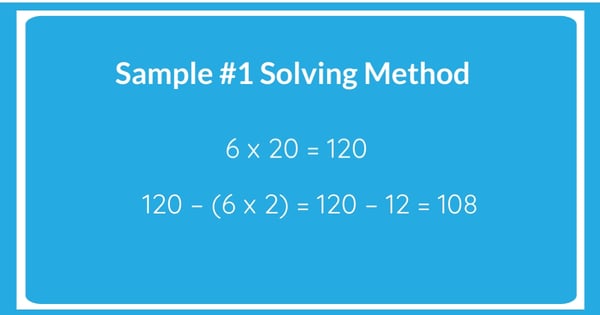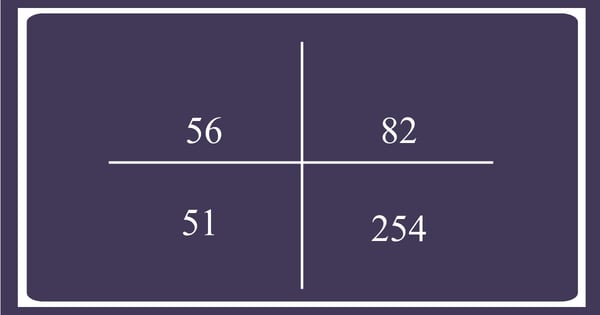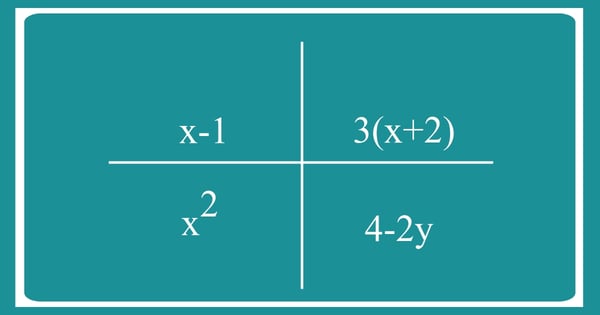What’s the first thing that comes to mind when you think of math? You probably think about operations with numbers, memorizing formulas, and solving equations. However, students today can search for formulas in only a few seconds and solve long computations with a calculator just as quickly. The classroom is shifting with these changes.

Today’s math class needs to be more than memorizing steps and following a systematic solving approach. Students must develop a logical thinking process. Really, as teachers, it’s essential to focus on teaching students how to think rather than what to think.
Creating a specialty course by incorporating this shift into your teaching can reduce stress and increase engagement. When students know there is one right answer to find, they feel stressed or hesitant to try for fear of failure. When put under pressure if they can’t get that answer, they might even feel inclined to take a friend’s answer or copy from an online source like PhotoMath or ChatGPT.
By making your classroom a low stakes environment, students feel safe to share their ideas without fear of being wrong. Start small. Try some of these simple ideas that other professionals are putting to use to jump start their classes, develop logical thinking, and expand students’ math vocabularies.
Howie Hua, Professor at Fresno State, has a strong Twitter (now X) presence due in part to his popular Mental Math Monday posts. Even as adults, we’re pulled in to engage when he shares his simple math problems, like 6 times 18.
Instead of focusing on the answer, he challenges his followers to think past the systematic solving approaches and, instead, contemplate how to do this problem mentally. Reading the comments, you’ll see so many creative ideas. Here are some examples:

.jpeg?width=600&height=315&name=Math-Blog-Blog-Graphic%20(1).jpeg)
.jpeg?width=600&height=315&name=Math-Blog-Blog-Graphic%20(2).jpeg)
Does math equal critical thinking in your classroom?
Picture this scenario in your classroom. Imagine students in your K-12 learning environment verbalizing their thinking process using math vocabulary while hearing and evaluating alternative approaches. The answer, 108, can even be given at the start because the answer is not the goal. It’s all about how students get there. Students don’t need to stress because they can try different approaches to test what works and share their conclusions.
Other teachers are using simple two by two tables of numbers to engage students to think about number relationships. The numbers change each time, but the question remains the same: “Which one doesn’t belong?”
Here is an example:


Students will share their different perspectives. Some will point out surface-level differences, such as 82 is the only number without a five in it or 254 is the only three-digit number. Others will dive more deeply into math concepts, seeing that 51 is the only odd number.
There are countless ways to compare these numbers and there is definitely more than one “right answer.” The focus is having students support their observations with details and use their math vocabulary. Scale this up easily by using fractions, expressions, or even sequences.
Despite initial impressions, math is not all about putting pencil to paper and getting one right answer. Let’s encourage creative thinking to guide different approaches. Let’s support students to grow their math vocabulary through conversation. Let’s teach students how to think critically through these fun, stress-free conversational games.
 Ryan Jackson is an Instructional Manager for Lincoln Learning Solutions. She has more than 10 years of experience in K-12 online education. Ryan spends her free time traveling across the U.S. with her husband and two children.
Ryan Jackson is an Instructional Manager for Lincoln Learning Solutions. She has more than 10 years of experience in K-12 online education. Ryan spends her free time traveling across the U.S. with her husband and two children.



.jpeg?width=600&height=315&name=Math-Blog-Blog-Graphic%20(1).jpeg)
.jpeg?width=600&height=315&name=Math-Blog-Blog-Graphic%20(2).jpeg)


 Ryan Jackson is an Instructional Manager for Lincoln Learning Solutions. She has more than 10 years of experience in K-12 online education. Ryan spends her free time traveling across the U.S. with her husband and two children.
Ryan Jackson is an Instructional Manager for Lincoln Learning Solutions. She has more than 10 years of experience in K-12 online education. Ryan spends her free time traveling across the U.S. with her husband and two children.